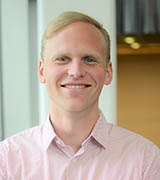The Training Page
FROM THE FELLOWS COMMITTEE
Taking Control of the Job Search During the Pandemic
Even in normal times, applying for academic faculty positions is time-consuming, and the competition is fierce. Throw in a pandemic, your chances of snagging that long-sought-after position in academia may feel hopeless. Currently in the midst of my own job search, I have experienced difficult moments, but I have also fortunately found ways to alleviate the anxiety.
Structured around the academic calendar, academic job postings typically peak between September and November. So, in March, when I heard about colleges and universities beginning to implement hiring freezes and rescinding new faculty offers, I was worried about my rapidly approaching faculty search in the fall. And on top of that, nonessential laboratory research had come to a standstill as NIH shut down all but mission-critical functions. My plans of submitting one last paper before the job search quickly became unrealistic.
When in-person professional trainings swiftly switched to virtual Zoom and WebEx sessions, I attended a handful of workshops arranged by the Office of Intramural Training and Education (OITE). As an introduction to many of these sessions, the OITE staff reminded attendees that many things about the pandemic were out of our control, but more importantly, that there were still a great number of things that we could control. We could prepare our job packets. We could attend to our career development. We could attend to our science. And we could control our own thoughts and behaviors. With that thought in mind, I got to work.
Since my career aspiration has long been to become a faculty member at a selective liberal arts college, my job packet would need a solid “Teaching” statement. I dusted off a draft that I had written in NIH’s “Scientists Teaching Science” course five years ago. (As a side note, I highly recommended this course!) Now with four years of adjunct teaching (at a couple of local universities) under my belt, I reflected on my experiences and identified what I personally believe about teaching and learning and got those thoughts down on paper. And as required of all academic positions, I would also need a solid publication record. In the absence of new data being generated in the lab during the COVID-19 lockdown, I wrote a solid draft of a review that I had thought about for a long while. I drafted cover letters, I updated my CV, and with the backdrop of persistent racial injustice in the news, I drafted the all-important “Diversity and Inclusion” statement. I identified what I could control, and I did what I could to control it.
While I would generally consider myself an optimist, I am also a realist. I guess that makes me a realistic optimist. So with the already-tough job market in academia compounded by the economic crisis resulting from the COVID-19 outbreak, I decided that I needed to consider a Plan B. A backup. Reminded of a Career Spotlight Series session at my institute a couple of years back, I decided to look into what it would take to become a Medical Science Liaison (MSL). I read about the roles and responsibilities of an MSL, learned more about how clinical trials work through the NIH Office of Clinical Research (which I reasoned was important to know regardless), and did informational interviews. I even wrote an article about it for the May–June 2020 issue of the NIH Catalyst.
But if I thought that getting a job in academia was hard, getting an MSL position is almost certainly tougher. Nevertheless, if spring rolls around and I am still without an academic job, I will muster up all of the optimism I have left and again make a plan to control what I can control.
That resilience would not be possible without a little self-care. For myself, that means going on runs, exploring new places in the region (since traveling via plane does not sound reasonable at the moment), and maintaining relationships—even if that sometimes requires staying six feet apart. Both physical and mental wellness are imperative during this period of ups and downs. If that’s something that you need to work on, the OITE fortunately has a whole host of resources to get you started. Remember—you are also in control of your own thoughts and behaviors.
If you’re also on the job hunt, I wish you the very best!

Craig Myrum has been a postdoctoral fellow at the National Institute on Aging’s Laboratory of Behavioral Neuroscience since 2015. He works in the Neurocognitive Aging Section, where he studies the intersection of memory, aging, and sleep. When his training is complete in 2021, he hopes he will have landed a job at a liberal arts college where he can both teach and continue his research. In his spare time he likes to run marathons, travel, and spend time outdoors. He has been overseeing and contributing to the “Training Page” since January 2016.
This page was last updated on Monday, March 21, 2022
